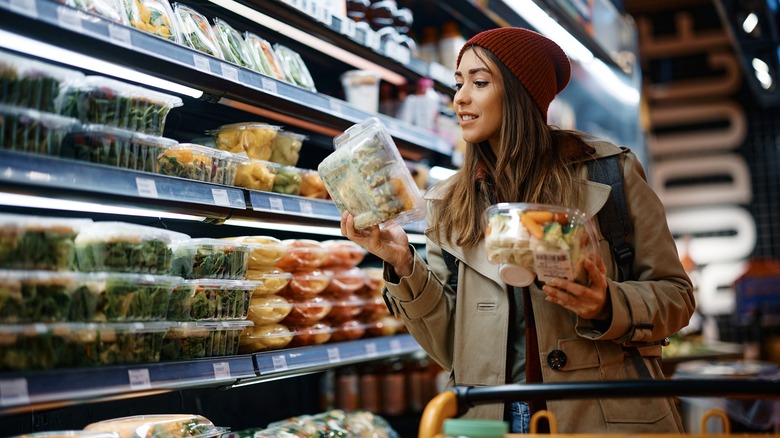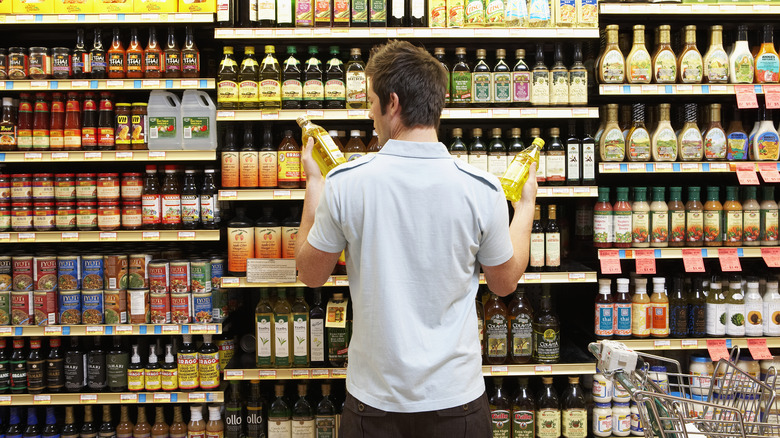How To Read The Shelf Layout In Grocery Stores
When it comes to grocery shopping, learning the basic layout of a store is one of the most crucial skills that any home cook can learn. Supermarkets are a business at the end of the day, and while you might just be popping in for a handful of ingredients, retailers use sight, smell, and even sound to get your brain primed to spend more. Some grocers even go as far as to change store layouts to play tricks on your wallet, tempting you to waste money on unnecessary items through fancy displays and cross-selling.
Most storefronts place their produce section near their entrance to greet customers with bright, vibrant fruits and vegetables. As part of the strategy of grocers, the freshness of these food items bring positive thoughts to the shopper, and tends to create a positive first impression of the whole place. (Not all of this is such a bad thing.)
Beyond this section lies the majority of shelf-stable goods, which are sometimes not paired in order of similar items to force clients to walk past enticing products more frequently. Grocers usually stock the back of their storefront with perishable dairy and meat products because most home cooks frequently restock these items, making shoppers have to traverse miles of alluring goodies on their way.
Places where supermarkets try to make you spend money
The main difference between modern grocery stores and supermarkets lies in the variety of products available for purchase. While your local bodega or convenience store might just stock the essential produce, canned goods, and meats, major retailers will go a further step by having bakeries, small restaurants, and even free sample booths near their entrance. These are meant to activate your sense of smell, which is known to kickstart people's perception of hunger and get them to buy a bite at the last minute.
Pharmacies are also not uncommon at the sides or near the doorway of most supermarkets. This conveniently minimizes the need for a second trip to the drugstore, but it also forces you to lounge around the area when you're waiting for prescriptions. If you're trying to refill medications at a supermarket and know there might be a wait involved, try to tackle this before wandering into the shopping aisles. If you're shopping carefully and on the lookout for deals or discounts, this should take you long enough that your pharmacy items will be ready for pickup.
Other ways to avoid wasting money while grocery shopping
Lists are perhaps one of the best and most cost-effective ways to keep yourself from overspending at the grocery store. Just jotting down a small catalog of items you need to get on a small notepad or even your phone can help you enter any supermarket with a mission in hand. Exercising a bit of self-control goes a long way with this tip, as you'll only save up money if you stick to only selecting the items on your list. You can take this a step further by giving yourself a budget to work around, forcing you to keep prices at the forefront of your mind as you look around for the essentials you entered the storefront for.
Department locations aren't the only places where grocers will try to use mind games on you, as shelves are deliberately stocked to display name-brand items near eye level. These products are usually much easier to reach and more expensive than generic variants, which are usually tucked away at the bottom of the rack. While it might be more inconvenient to crouch, taking the time to look around every nook of a shelf can ensure that you get the best deal out of every item in your shopping list, keeping you within your budget and happy at the checkout line.



